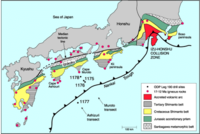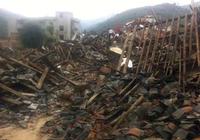-
Start-ups offer apps which help people cope with disasters
Open data policies which allow government agencies to share public information with citizens and the private sector have made California welcoming to startups dedicated to helping communities recover following a disaster.For example: Appallicious offers an app which allows subscribed cities and towns to select from hundreds of data sets, then share with the public, information on evacuation routes, current hazards, and location of critical resources.BlueLine Grid allows public employees from different agencies to communicate with each other during a crisis.SeeClickFix is connecting residents to their local government.
-
-
Florida Keys preparing for rising sea levels
The Florida Keys rank third among East Coast communities at risk of “population displacement” due to higher seas which will flood nearby land. Scientists say that if sea levels continue to rise at the current rate, high waters which drowned the Keys during 2005’s Hurricane Wilma could become a normal part of living in Monroe County by 2060. Officials in Monroe County, Florida are putting together a GreenKeys Sustainability Action Plan which will help residents of the Florida Keys maintain a sustainable lifestyle while under threat of sea-level rise due to climate change.
-
-
No Fukushima radiation found in California’s coastal areas
Following the 11 March 2011 Fukushima disaster, researches wanted to see whether radioactivity could be found in Bay Area precipitation. They collected weeks’ worth of rainwater around UC Berkeley Campus to find out. The results: low levels of a number of different radioactive nuclei produced by the fission of uranium-235 including, cesium-134, cesium-137, and iodine-131. “The levels we saw were detectable, but low and not a health hazard to anyone,” said UC Berkeley’s nuclear engineering professor Eric Norman.
-
-
Japan boasts an earthquake early-warning system, but critics question its value

Since 1979, scientists with the Japanese earthquake prediction program have been monitoring a stretch of coastline southwest of Tokyo, watching for ground motion which might signal a pending rupture on the nearby fault zone. If motion is detected, Japanese law requires the prime minister to issue an emergency warning to close schools, secure hospitals, and shut down critical public transportation systems. Critics argue Japan will be unable to predict earthquakes in the same manner meteorologists track approaching typhoons or rain storms, saying that the program offers false hope.
-
-
ShakeAlert’s performance during August Napa tremor should lead to regional deployment: Supporters
Before the magnitude-6 earthquake struck Napa County late August, the Bay Area Rapid Transit received an alert ordering trains to stop, and some 911 operators had a few seconds of warning to brace for an influx of calls from concerned residents. The success of ShakeAlert, California’s earthquake early-warning system currently in the testing phase, has encouraged state lawmakers to push for funding — and deploying — the regional early warning system.
-
-
New Orleans creates economic value out of environmental vulnerability
Following the devastation of Hurricane Katrina in 2005, New Orleans and the state of Louisiana have become so adept at dealing with disaster reconstruction, that their new-found skills are now seen as an economic asset to be shared, for profit, with other states and localities. The area’s new environmental awareness is also a source of economic growth, as analysts now consider “emerging environmental” as one of six key industries in the city and state to focus on development, along with coastal restoration and water management, disaster mitigation and management, hazardous waste disposal, advanced bio fuels and waste water treatment.
-
-
Growing cyberthreats lead to growing interest in cybersecurity insurance
The increasing sophistication and scope of cyberattacks on businesses – and the increasing damage such attacks are causing – have led to growing interest in cybersecurity insurance. The industry is urging the government to treat cyberattacks as acts of terrorism which should be covered under the Terrorism Risk Insurance Act(TRIA), while also looking into how the Stafford Actcould help companies after a cyberterror attack. At the same time, more private insurers are offering limited cyber-coverage, but many say they would discontinue selling cyber policies if TRIA is not renewed. As the term “cyber-coverage” continues to be defined by large insurers, the insurance product lines continue to change.
-
-
American cities leading on climate change preparedness
Many mid-size American cities are becoming the most innovative responders when it comes to creating infrastructure which is ready for the consequences of climate change on the scale predicted by scientists. With these scientific predictions in mind, and citing deadly and costly “super storms” such as Sandy in 2012 — which killed 130 people, destroyed 650,000 homes, and left 8.5 million people without power —cities have not only looked to rebuild following such natural disasters, but also to create “resiliency” within their infrastructure and communities.
-
-
Experts defend operational earthquake forecasting

After the devastating 2009 L’Aquila earthquake in Italy, critics suggested that operational earthquake forecasting (OEF) is ineffective, distracting, and dangerous. In an editorial published in the Seismological Research Letters, experts defend OEF, arguing the importance of public communication as part of a suite of activities intended to improve public safety and mitigate damage from earthquakes.
-
-
Improving earthquake early warning systems, data collection
Researchers are working on what will be the U.S. first earthquake early warning system available to the public. Once fully implemented, the system will use networks of seismic instrumentation to detect when an earthquake is pending and send alerts via text message or other mass notification systems to people. The researchers are also workingon the Quake-Catcher Network to improve monitoring of earthquake activity around the world. Officials and city planners can use the data provided by Quake-Catcher to help decide where to build critical infrastructure such as power plants, hospitals, and water lines.
-
-
Medical registry systems are becoming part of emergency preparedness plans
Communities across the country are exploring medical registry systems as part of their emergency preparedness plans. Using medical registries for emergency planning has been critical for New Orleans city officials, especially after Hurricane Katrina.St. Louis deployed its Functional Needs Registry after a power outage occurred in 2006. Experts note, though, that just because residents are listed in the city’s registry does not mean that help and services will always be delivered during emergencies.
-
-
U.S. municipal data centers prepare to cope with sea-level rise
The National Academy of Sciences says that 316 coastal cities in the United States are expected to be affected by sea-level rise within the next few decades. Those responsible for infrastructure maintenance are now considering how they can be better prepared for this eventuality. Among their tasks is the protection of data centers which handle much of the world’s information.
-
-
Napa earthquake may persuade lawmakers to fund earthquake warning system
Last Sunday’s Napa earthquake may push Congress to increase funding for an earthquake warning system. Building out the West Coast earthquake warning system, called ShakeAlert, would cost $120 million over five years, and an additional $16 million a year to operate. Today, ShakeAlert operates in a testing phase, and sensors notify researchers and volunteer participants when an earthquake has been detected.
-
-
Seismic retrofitting of older buildings helps, but it has its limits
Even before last Sunday’s magnitude-6 earthquake struck Napa, officials anticipated that such an event would damage many of Napa’s historic brick buildings. So years ago, brick structures were required to get seismic retrofitting — bolting brick walls to ceilings and floors to make them stronger. “We can’t keep every single brick in place in many of these older buildings without extraordinarily costly retrofits,” says a structural engineer. “We can reduce the damage in losses, but not eliminate them entirely in older buildings.”
-
-
Investigating potential influences on recent U.K. winter floods
A comprehensive review of all potential factors behind the 2013-14 U.K. winter floods does not definitively answer whether human activity played a role in the magnitude of the winter flood events. It does, though, examine how factors such as the state of the global oceans may have interacted with wind patterns and subsequent high-level atmospheric features.
-
More headlines
The long view
Using Drone Swarms to Fight Forest Fires
Forest fires are becoming increasingly catastrophic across the world, accelerated by climate change. Researchers are using multiple swarms of drones to tackle natural disasters like forest fires.
How Climate Change Will Affect Conflict and U.S. Military Operations
“People talk about climate change as a threat multiplier,” said Karen Sudkamp, an associate director of the Infrastructure, Immigration, and Security Operations Program within the RAND Homeland Security Research Division. “But at what point do we need to start talking about the threat multiplier actually becoming a significant threat all its own?”
